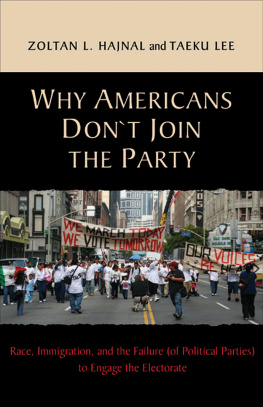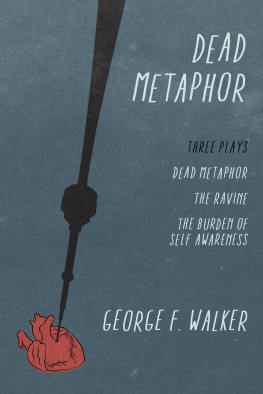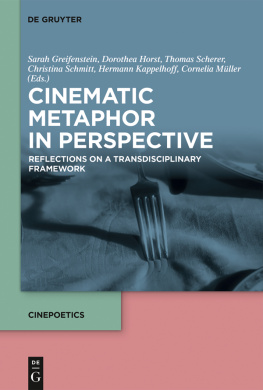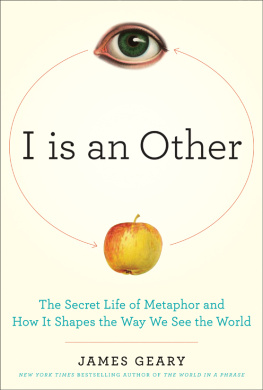Kövecses Zoltán - Metaphor: a practical introduction
Here you can read online Kövecses Zoltán - Metaphor: a practical introduction full text of the book (entire story) in english for free. Download pdf and epub, get meaning, cover and reviews about this ebook. City: USA;Oxford, year: 2010;2007, publisher: Oxford University Press, genre: Religion. Description of the work, (preface) as well as reviews are available. Best literature library LitArk.com created for fans of good reading and offers a wide selection of genres:
Romance novel
Science fiction
Adventure
Detective
Science
History
Home and family
Prose
Art
Politics
Computer
Non-fiction
Religion
Business
Children
Humor
Choose a favorite category and find really read worthwhile books. Enjoy immersion in the world of imagination, feel the emotions of the characters or learn something new for yourself, make an fascinating discovery.

- Book:Metaphor: a practical introduction
- Author:
- Publisher:Oxford University Press
- Genre:
- Year:2010;2007
- City:USA;Oxford
- Rating:5 / 5
- Favourites:Add to favourites
- Your mark:
- 100
- 1
- 2
- 3
- 4
- 5
Metaphor: a practical introduction: summary, description and annotation
We offer to read an annotation, description, summary or preface (depends on what the author of the book "Metaphor: a practical introduction" wrote himself). If you haven't found the necessary information about the book — write in the comments, we will try to find it.
Metaphor: a practical introduction — read online for free the complete book (whole text) full work
Below is the text of the book, divided by pages. System saving the place of the last page read, allows you to conveniently read the book "Metaphor: a practical introduction" online for free, without having to search again every time where you left off. Put a bookmark, and you can go to the page where you finished reading at any time.
Font size:
Interval:
Bookmark:
METAPHOR
A Practical Introduction
Second Edition
ZOLTN KVECSES
Exercises written with
Rka Benczes
Zsuzsanna Bokor
Szilvia Csbi
Orsolya Laznyi
Eszter Nucz


Oxford University Press, Inc., publishes works that further
Oxford Universitys objective of excellence
in research, scholarship, and education.
Oxford New York
Auckland Cape Town Dar es Salaam Hong Kong Karachi
Kuala Lumpur Madrid Melbourne Mexico City Nairobi
New Delhi Shanghai Taipei Toronto
With offices in
Argentina Austria Brazil Chile Czech Republic France Greece
Guatemala Hungary Italy Japan Poland Portugal Singapore
South Korea Switzerland Thailand Turkey Ukraine Vietnam
Copyright 2010 by Zoltn Kvecses
Published by Oxford University Press, Inc.
198 Madison Avenue, New York, New York 10016
www.oup.com
Oxford is a registered trademark of Oxford University Press.
All rights reserved. No part of this publication may be reproduced,
stored in a retrieval system, or transmitted, in any form or by any means,
electronic, mechanical, photocopying, recording, or otherwise,
without the prior permission of Oxford University Press.
Library of Congress Cataloging-in-Publication Data
Kvecses, Zoltn.
Metaphor : a practical introduction / Zoltn Kvecses ; exercises
written with Szilvia Csbi... [et al.].2nd ed.
p. cm.
Includes bibliographical references and index.
ISBN 978-0-19-537494-0 (pbk.)
1. Metaphor. I. Csbi, Szilvia. II. Title.
PN228.M4K68 2009
808dc22 2009004385
9 8 7 6 5 4 3 2 1
Printed in the United States of America
on acid-free paper
To GEORGE & MARK
I n the past six to ten years the theory of conceptual metaphor has become the most influential and widely used theory of metaphor. Some of the new developments can be found in such diverse areas of research as
the neural theory of metaphor
the theory of conceptual integration
metaphor in discourse
the relationship between embodiment and metaphor
the embeddedness of metaphor in cultural context
the nature of mappings
metaphor in gestures
the study of multimodal metaphor
metaphor identification
metaphor processing
the corpus linguistic study of metaphor
emotion metaphors
the theory of metonymy
metaphor in foreign language teaching
metaphor in the study of grammar
and others.
All of these areas are now discussed in this second edition of Metaphor: A Practical Introduction, and two of them, the embodiment of emotion metaphors and metaphor in discourse, have received their own independent chapters. The two new chapters are , Metaphor in Discourse. In the last chapter of the book, by studying a single example, I have made an attempt to investigate the relationships among various strands of what is commonly called conceptual metaphor theory.
I have also tried to update the literature throughout as fully as I could. In addition, all figures have been redrawn, thus providing the reader with a more uniform, more esthetically pleasing, and more illuminating visual representation of sometimes complex ideas.
Last but not least, dozens of new exercises have been added to the old ones, we hope, making the book even more user-friendly and more fun to study from.
At the same time, however, several of the new additions reflect exciting, often challenging, and sometimes controversial recent research findings that, at least my hope is, give food for thought not only for interested students but also for researchers and teachers alike.
The Study of Metaphor
F or most of us, metaphor is a figure of speech in which one thing is compared with another by saying that one is the other, as in He is a lion. Or, as the Encyclopaedia Britannica puts it: metaphor [is a] figure of speech that implies comparison between two unlike entities, as distinguished from simile, an explicit comparison signalled by the words like or as [emphases in the original]. For example, we would consider the word lion to be a metaphor in the sentence Achilles was a lion in the fight. We would probably also say that the word is used metaphorically in order to achieve some artistic and rhetorical effect, since we speak and write metaphorically to communicate eloquently, to impress others with beautiful, esthetically pleasing words, or to express some deep emotion. Perhaps we would also add that what makes the metaphorical identification of Achilles with a lion possible is that Achilles and lions have something in common: namely, their bravery and strength.
Indeed, this is a widely shared viewthe most common conception of metaphor, both in scholarly circles and in the popular mind (which is not to say that this is the only view of metaphor). This traditional concept can be briefly characterized by pointing out five of its most commonly accepted features. First, metaphor is a property of words; it is a linguistic phenomenon. The metaphorical use of lion is a characteristic of a linguistic expression (that of the word lion). Second, metaphor is used for some artistic and rhetorical purpose, such as when Shakespeare writes all the worlds a stage. Third, metaphor is based on a resemblance between the two entities that are compared and identified. Achilles must share some features with lions in order for us to be able to use the word lion as a metaphor for Achilles. Fourth, metaphor is a conscious and deliberate use of words, and you must have a special talent to be able to do it and do it well. Only great poets or eloquent speakers, such as, say, Shakespeare and Churchill, can be its masters. For instance, Aristotle makes the following statement to this effect: The greatest thing by far is to have command of metaphor. This alone cannot be imparted by another; it is the mark of genius. Fifth, it is also commonly held that metaphor is a figure of speech that we can do without; we use it for special effects, and it is not an inevitable part of everyday human communication, let alone everyday human thought and reasoning.
A new view of metaphor that challenged all these aspects of the powerful traditional theory in a coherent and systematic way was first developed by George Lakoff and Mark Johnson in 1980 in their seminal study: Metaphors We Live By. Their conception has become known as the cognitive linguistic view of metaphor. Lakoff and Johnson challenged the deeply entrenched view of metaphor by claiming that (1) metaphor is a property of concepts, and not of words; (2) the function of metaphor is to better understand certain concepts, and not just some artistic or esthetic purpose; (3) metaphor is often not based on similarity; (4) metaphor is used effortlessly in everyday life by ordinary people, not just by special talented people; and (5) metaphor, far from being a superfluous though pleasing linguistic ornament, is an inevitable process of human thought and reasoning.
Lakoff and Johnson showed convincingly that metaphor is pervasive both in thought and everyday language. Their insight has been taken up by recent dictionary preparers as well. For instance, Collins Cobuild English Guides 7: Metaphor (cited as the Collins Cobuild metaphor dictionary in this volume) has examples of metaphors, such as the following (metaphorical expressions in the example sentences or phrases are italicized):
Next pageFont size:
Interval:
Bookmark:
Similar books «Metaphor: a practical introduction»
Look at similar books to Metaphor: a practical introduction. We have selected literature similar in name and meaning in the hope of providing readers with more options to find new, interesting, not yet read works.
Discussion, reviews of the book Metaphor: a practical introduction and just readers' own opinions. Leave your comments, write what you think about the work, its meaning or the main characters. Specify what exactly you liked and what you didn't like, and why you think so.










